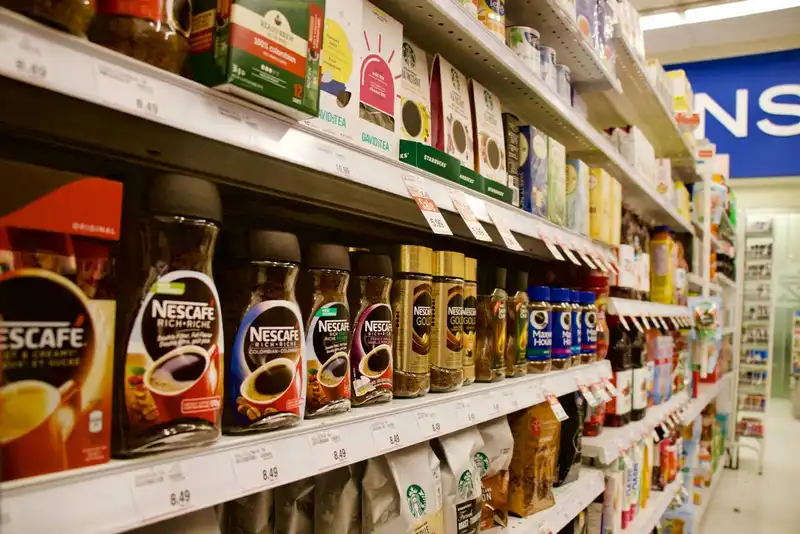The Ins and Outs of the Food Manufacturing Process
Introduction to Food Manufacturing Process
After crafting business plans and objectives, food manufacturers need to develop a comprehensive production process. Also known as the food manufacturing process, this plan will outline all the necessary steps in creating a product. By delineating the manufacturing stages, businesses can keep track of their goals and ensure they are making progress. It will also help eliminate delays in the supply chain and improve efficiency.
Steps of Developing a Food Manufacturing Process

Having a food manufacturing process is important because it helps top leaders effectively meet their projected growth. It also enables them to find bottlenecks and highlight areas for improvement. To begin developing a food manufacturing process, business owners should consider the following steps.
1. Analyze the Current Environment

The first step of creating a food manufacturing process involves analyzing the facility's physical environment. Executives should assess the accessibility and space between personnel and equipment. They can do this by measuring how quickly teams can find supplies or move around the manufacturing plant. Manufacturers should also analyze the rate at which products move within the production line.
These insights will increase visibility into what can be optimized. For example, if a raw material needs to be cooked quickly for food safety, manufacturers can place the cooking section near the preparation area. And if the workflow is too cramped, then the spatial design can be maximized to minimize risks. To thoroughly analyze the manufacturing facility, executives should refer to the following checklist.
- Materials - Do the ingredients require specific temperatures or lighting? Are they within reach for employees?
- Personnel - What do employees need to work efficiently and productively?
- Equipment - Are equipment and supplies accessible for personnel? Are they placed at a safe location?
- Storage - Are ingredients and supplies properly stored, according to their requirements and shelf life? Is the company complying with food safety rules?
- Space - Is there enough space for employees to move around the manufacturing facility?
2. Monitor Goals and Objectives

Each stage of production should be assessed based on pre-established goals. It is recommended that manufacturers set up key performance indicators (KPIs) to monitor the efficiency of their processes. For example, they can use KPIs to identify how many hours it takes to manufacture a final product. They can also measure how long it takes for an item to be packaged or how many products are shipped out per hour.
With key performance indicators, executives can assess their goal achievement progress with quantifiable measurements. This ensures accurate insights and can help management teams create data-driven strategies.
3. Outline Steps to the Food Manufacturing Process
Once manufacturers understand their physical facility and goal monitoring, they need to establish steps to the food manufacturing process. This step entails identifying the function of each stage of manufacturing. For instance, the first stage may be to clean and prepare workstations to ensure a food-safe and bacteria-free environment. The following step could be to check the temperature of raw materials to make sure they are safe to package.
Management teams also need to determine what each phase needs to effectively meet sales goals. This includes creating a facility layout for a spacious workflow and organizing production lines to ensure productivity. Oftentimes, businesses will hire third-party consultants to help with developing a manufacturing process. These entities are known for having an objective perspective and are knowledgeable of food processing case studies.
Importance of Quality in a Food Manufacturing Process

A key aspect of the food manufacturing process is ensuring high-quality products. Not only does this encompass the flavor and taste of food, but food safety as well. These products are made for human consumption and should not negatively affect people's health. According to the Center for Disease and Control (CDC), 48 million people get sick each year from foodborne diseases. They also estimate that approximately 90% of these illnesses are caused by 7 pathogens, which include norovirus, salmonella, and listeria.
Lack of food safety and quality can result in bad publicity, which will negatively impact the brand's reputation. It will also lead companies to lose sales and revenue, as products are recalled and purchases are refunded. To ensure food quality, manufacturers should consider these best practices and incorporate them into their processes.
- Quality Control Checks - This refers to assessing inventory regularly to make sure items are not expired, spoiled, or damaged. Conducting quality control checks periodically will enable manufacturers to guarantee that their products are made with fresh and safe-to-eat ingredients.
- Train Employees - All employees that have to handle food products as a part of their responsibility need to be properly trained. They should be knowledgeable about food safety protocols and good hygiene practices. This will ensure that ingredients are handled correctly from the start and will minimize quality issues in the future.
- Carefully Choose Vendors - Manufactures should do their due diligence and select trusted vendors and third-party suppliers who will provide high-quality supplies. If a manufacturing company produces meat products, then executives need to find farmers who will guarantee high-quality cuts. To properly vet vendors, manufacturers should look at client reviews and testimonials.
- Promote Food Safety Regulations - Food safety rules should be printed clearly in employee handbooks and on facility walls to remind personnel of their importance. If specific products or ingredients need special care then that should be noted legibly as well.
Conclusion to Food Manufacturing
- The food manufacturing process refers to the steps involved with creating a food product. Manufacturers should comprehensively outline their processes to keep track of their objectives and monitor their process.
- A manufacturing process will also help management teams identify bottlenecks. Additionally, it will highlight improvements that need to be made to enhance productivity.
- Food manufacturers that are looking to develop a manufacturing process can begin by following 3 key steps. This includes assessing their current environment, monitoring established goals, and creating steps to the manufacturing process.
- When crafting a food manufacturing process, managers and top-level executives need to emphasize quality. Quality in the food manufacturing process is important because these products are made for human consumption.




